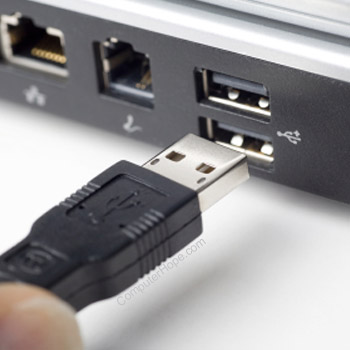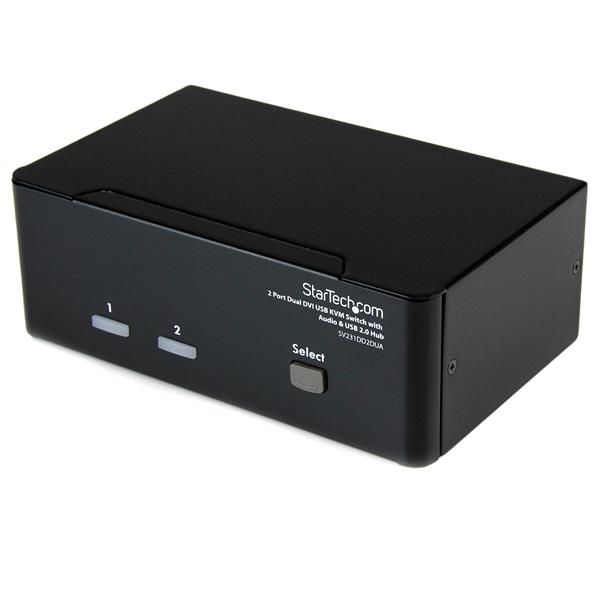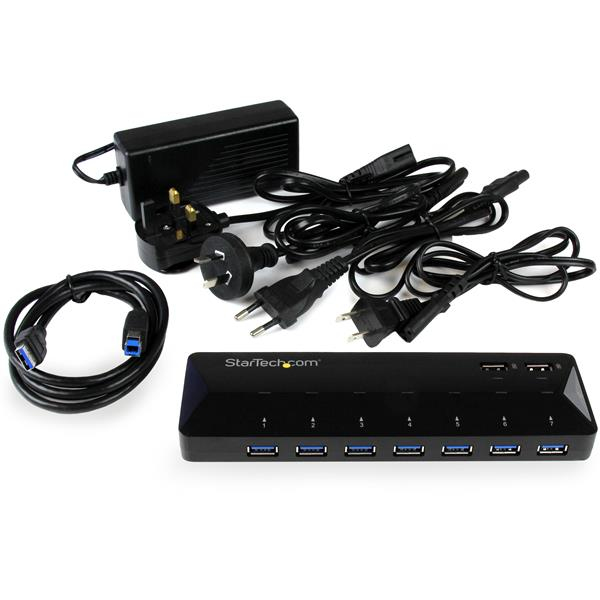Drivers Comtec Port Devices
This document will guide you through installing the Intel® Android* USB Driver package which will enable you to connect your Windows* based machine to your Android device that contains an Intel® Atom™ processor inside.

System Requirements
Hardware Requirements:
Android Mobile device with the Intel Atom Processor inside except SoFIA
A micro-USB to USB cable (same cable used to charge device)
Supported Host Operating Systems:
Windows® 10 (32/64-bit)
Download the latest drivers, software, firmware, and diagnostics for your HP products from the official HP Support website. Open the Device Manager by right clicking “My computer” and selecting control panel. Look under Ports (COM & LPT). You should see an open port named 'USB Serial Port' Right click on the 'USB Serial Port' and choose the 'Update Driver Software' option. Next, choose the 'Browse my computer for Driver software' option. Source: Windows Central On Windows 10, a device driver is an essential piece of code, which allows the system to interact with a specific hardware (such as graphics card, storage driver, network. COM Port Driver COM-DRV for Windows; COM Port Driver COM-DRV for Linux; CONPROSYS™ - Industrial IoT Analog I/O / Digital I/O / Counter. I/O modules configurable with the IoT Edge controller, CPS-BXC200. Remote I/O system the CONPROSYS nano series. Windows API API-TOOL for Windows. We will be uploading other driver software.

Windows 8.1 (32/64-bit)
Windows 8 (32/64-bit)
Windows 7 (32/64-bit)
Windows Vista (32/64-bit)
Windows XP (32-bit only)
Supported Android Device Operating Systems:
Android 2.3.7 – Gingerbread (GB)
Android 4.0.x – Ice Cream Sandwich (ICS)
Android 4.4 – Kit Kat
Android 5.x – Lollipop
Installation steps
Warning: Make sure you do not have your Android device connected to your computer during the installation process.
- Download the installer package from https://software.intel.com/content/www/us/en/develop/android/tools.html
- Run the installer and accept the Windows User Account Control (UAC) prompt, if applicable.
- You will see the following screen. Click Next to continue. (If the installer detects an older version of the driver, accept to uninstall it.)
- You will see the following screen. Read and agree to the Intel Android USB Driver End-User License Agreement (EULA).
- You will prompted to select components as seen on the screen below. Click on next button to proceed.
- Choose the path for the installation and click Install.
- The installer will proceed to install Android USB drivers. This may take a few minutes to complete.
- After the driver installation is completed, click OK on the pop-up note and then click on Finish to close the installation program.
Supported USB profiles
After installing the USB driver package, plug in your Android device to your computer using your micro-USB to USB cable. The following are the supported USB profiles via the Intel Android USB Driver package:
- ADB (Android Debug Bridge): This is the debug interface of Android. It is mandatory to ise in order to re-flash, and debug.
- MTP (Media Transfer Protocol): This is Windows protocol to facilitate the transfer of media files.
- PTP (Picture Transfer Protocol): This is Windows protocol to allow the transfer of images from digital cameras to computers.
- RNDIS: This functionality provides a virtual Ethernet link using phone network.
- CDC Serial (Modem AT Proxy): This functionality provides the link to Modem to allow to use AT commands through a virtual com port:
Troubleshooting
1/ Device is not recognized at all
- These drivers are only for Intel® devices. If you’re using a device from one of our OEM, please get the drivers directly from their web site, or you can use the list of links provided by Google here.
2/ I have errors in Windows Device Manager
- Open Windows Device Manager:
- You may see USB Mass Storage instead of ADB Device. If it’s the case, right click on Mass Storage device icon and select ‘Uninstall’.
Then unplug your device from the computer and install drivers’ setup again. - You may see Android Device with yellow warning icon. If it’s the case, right click on Android Device icon and select ‘Uninstall’.
Then unplug your device from the computer and install drivers’ setup again
- You may see USB Mass Storage instead of ADB Device. If it’s the case, right click on Mass Storage device icon and select ‘Uninstall’.
3/ I can see Portable Device but no Android Debug Bridge (ADB) profile
You may have not enabled “USB Debugging” option.
The developer options on your phone are hidden by default. Open the settings on your phone, and find the About section. Look through it until you see the 'Build number' entry. Tap it five times in quick succession, and you should see a small dialog letting you know that you're now a developer.
Come back to Settings main menu and go into Developer Options, then enable USB Debugging.
4/ I’m old school and still using Windows XP. When I activate MTP there is no pop-up to allow me to access phone file system or transfer media files.
MTP is not supported by default with Windows XP. You have to install Windows Media Player 10 or later.
Further Questions & Support
For other troubleshooting support, post questions on the Intel support forum for Android developers: (https://software.intel.com/content/www/us/en/develop/android.html)
If your computer doesn't recognize your connected device, you might see an unknown error or a '0xE' error. If you do, follow these steps and try to connect your device again after each step:

- Make sure that your iOS or iPadOS device is unlocked and on the Home screen.
- Check that you have the latest software on your Mac or Windows PC. If you're using iTunes, make sure you have the latest version.
- Make sure that your device is turned on.
- If you see a Trust this Computer alert, unlock your device and tap Trust.
- Unplug all USB accessories from your computer except for your device. Try each USB port to see if one works. Then try a different Apple USB cable.*
- Restart your computer.
- Restart your device:
- Try connecting your device to another computer. If you have the same issue on another computer, contact Apple Support.
For more help, follow the steps below for your Mac or Windows PC.
* Learn how to connect iPad Pro (11-inch) or iPad Pro 12.9-inch (3rd generation) to your computer.
Drivers Comtec Port Devices Gigabit
If you use a Mac
- Connect your iOS or iPadOS device and make sure that it's unlocked and on the Home screen.
- On your Mac, hold down the Option key, click the Apple menu, and choose System Information or System Report.
- From the list on the left, select USB.
- If you see your iPhone, iPad, or iPod under USB Device Tree, get the latest macOS or install the latest updates. If you don't see your device or still need help, contact Apple Support.
If you use a Windows PC

The steps differ depending on if you downloaded iTunes from the Microsoft Store or from Apple.
If you downloaded iTunes from the Microsoft Store
Drivers Comtec Port Devices Bluetooth
Follow these steps to reinstall the Apple Mobile Device USB driver:

- Disconnect your device from your computer.
- Unlock your iOS or iPadOS device and go to the Home screen. Then reconnect your device. If iTunes opens, close it.
- Click and hold (or right-click) the Start button, then choose Device Manager.
- Locate and expand the Portable Devices section.
- Look for your connected device (such as Apple iPhone), then right-click on the device name and choose Update driver.
- Select 'Search automatically for updated driver software.'
- After the software installs, go to Settings > Update & Security > Windows Update and verify that no other updates are available.
- Open iTunes.
If you downloaded iTunes from Apple
Drivers Comtec Port Devices Inc
Follow these steps to reinstall the Apple Mobile Device USB driver:
- Disconnect your device from your computer.
- Unlock your iOS or iPadOS device and go to the Home screen. Then reconnect your device. If iTunes opens, close it.
- Press the Windows and R key on your keyboard to open the Run command.
- In the Run window, enter:
%ProgramFiles%Common FilesAppleMobile Device SupportDrivers - Click OK.
- Right-click on the
usbaapl64.inforusbaapl.inffile and choose Install.
You might see other files that start withusbaapl64orusbaapl. Make sure to install the file that ends in .inf. If you’re not sure which file to install, right-click a blank area in the File Explorer Window, click View, then click Details to find the correct file type. You want to install the Setup Information file. - Disconnect your device from your computer, then restart your computer.
- Reconnect your device and open iTunes.
If your device still isn't recognized
Check Device Manager to see if the Apple Mobile Device USB driver is installed. Follow these steps to open Device Manager:
- Press the Windows and R key on your keyboard to open the Run command.
- In the Run window, enter
devmgmt.msc, then click OK. Device Manager should open. - Locate and expand the Universal Serial Bus controllers section.
- Look for the Apple Mobile Device USB driver.
If you don't see the Apple Mobile Device USB Driver or you see Unknown Device:
- Connect your device to your computer with a different USB cable.
- Connect your device to a different computer. If you have the same issue on another computer, contact Apple Support.
Drivers Comtec Port Devices Usb
If you see the Apple Mobile Device USB driver with an error symbol:
If you see , , or next to the Apple Mobile Device USB driver, follow these steps:
- Restart the Apple Mobile Device Service.
- Check for and resolve issues with third-party security software, then restart your computer.
- Try to install the
usbaapl64.inforusbaapl.inffile again.